Хаас за Италия
Ромен Грожан:
How has the technical partnership with Ferrari been and how has it evolved as Haas F1 Team went from designing a car to building it first racecar to building the current-generation car?
Ferrari’s been a really good help for us. From day one we didn’t have to bother about things like the power unit, or suspension or gearbox – a lot of parts that would’ve taken us a long time to build and to get right. So, that has been incredible. Being able to use them every year, and use the new generation every year, it just means that the car is getting better and better.
How crucial was Dallara and Ferrari in allowing Haas F1 Team to be competitive in not only its first year, but its second year when another new car needed to be built, and this year with an evolution of the 2017 car thanks to rules stability?
It’s the same thing with Dallara. They’ve been a great partner of the team and a great help to get everything working. It was a challenge for them as well. They didn’t know the exact demands of Formula One initially, but we grew up together.
A 1:19.525 lap set by Juan Pablo Montoya during practice for the 2004 Italian Grand Prix is widely regarded as the fastest Formula One lap of all time, as his average speed was 262.242 kph (162.950 mph). Will that time be eclipsed this year at Monza and a new benchmark for speed set? (Note: It rained during last year’s qualifying session, thwarting any attempt at a new track record.)
I don’t know. It will be interesting. It would be nice to try and beat that record, as it’s an old one. It would be nice to get that one. Saying that, the curbs were a bit different, and the chicane was fast at the time. We’ll see.
Where are the overtaking opportunities at Monza?
The good thing with Monza is there’s lots of overtaking opportunities. There’s turn one, three, eight and then the Parabolica. It’s more or less every single braking event.
Is overtaking at Monza a bit like a drag race where it’s about who can get on the power the fastest and most effectively?
Yes, pretty much. It’s about top speed and getting out of the corner, and the low speed is quite good as well, with the dirty air of the car in front of you.
Monza is a track with a lot of history and home to some of Formula One’s most passionate fans. Can you describe the atmosphere there?
The atmosphere is crazy in Monza. The Tifosi, the fans – they’re just great. The track is in the middle of a park. It’s like nowhere else. There are so many people coming and watching, cheering for the drivers and, of course, for Ferrari. The atmosphere is electric. I love it.
Have you had the opportunity to walk around the old portions of Monza, specifically the oval? If so, what ran through your mind when you saw the banking and realized cars in the late 1950s and early 1960s actually raced wheel-to-wheel there?
It was crazy! You can barely stand up at the top of the oval. We still go underneath part of it at the Ascari chicane. It was definitely a different time, a different era of safety measures. I’m sure it was good fun, though.
Would you have liked to have competed in that era just to see what it was like, or do you prefer to compete with the latest and greatest technology available?
I’d compete anytime. I’ve always loved Formula One racing, no matter the era.
Do you have any milestones or moments from your junior career that you enjoyed at Monza?
My first race in Formula Renault 2.0 in 2004 – the Eurocup Series – was at Monza, and I was on the front row after qualifying. That was quite good. Certainly a happy memory.
What is your favorite part of Monza?
I like the two Lesmos turns, the ‘Curva di Lesmos’.
Describe a lap around Monza.
You cross the start-finish line going into the first chicane with big braking, dropping down to second gear. Then you’ve got important acceleration going into the second chicane, which is a bit faster, a bit more curb usage on the exit. You then try and carry as much speed through the two Lesmos turns. Then you go under the old oval and into the Ascari chicane. There’s big braking here, with a bump. It’s always tricky to get the car there. Then you really want to go early on power to get to the Parabolica. There’s another very long straight line, with very late braking to the Parabolica. Again, tricky throttle application heading toward the start-finish line to set your lap.
Кевин Магнусен: After coming from a factory team in Renault and now having spent two years with Haas F1 Team, what has the technical partnership with Ferrari been like?
It’s been great. We get a really good, competitive package from Ferrari. We don’t have any complaints at all. It’s obvious that Ferrari is one of the leaders in F1 technology and we’ve benefitted from that relationship. We’re extremely happy.
A 1:19.525 lap set by Juan Pablo Montoya during practice for the 2004 Italian Grand Prix is widely regarded as the fastest Formula One lap of all time, as his average speed was 262.242 kph (162.950 mph). Will that time be eclipsed this year at Monza and a new benchmark for speed set?
I doubt it. This generation of cars, they’re very fast in the corners, but their strength isn’t the straight-line speed. Monza is all about straight-line speed. Of course, you need a good car in the corners to be competitive, but back then when Montoya set that lap time, they were unbelievably fast on the straights. So, I doubt we’ll be able to beat that one.
Where are the overtaking opportunities at Monza?
Everywhere. Monza is probably the best track for overtaking on the calendar. It’s always exciting racing there.
Is overtaking at Monza a bit like a drag race where it’s about who can get on the power the fastest and most effectively?
No. Monza is like any track in that it takes a perfect lap in every sense, and a perfect balance in the car as well.
Monza is a track with a lot of history and home to some of Formula One’s most passionate fans. Can you describe the atmosphere there?
Monza is all about the atmosphere. It’s got so much history and the Italian fans are really into it and they’re extremely passionate. It’s always a fantastic experience racing there.
Have you had the opportunity to walk around the old portions of Monza, specifically the oval? If so, what ran through your mind when you saw the banking and realized cars in the late 1950s and early 1960s actually raced wheel-to-wheel there?
I have been around the old track several times. It’s crazy to think they used to race around that kind of track.
Would you have liked to have competed in that era just to see what it was like, or do you prefer to compete with the latest and greatest technology available?
I’d prefer to be racing now, at least I think so. I can’t say for sure because I haven’t tried an older car from those years, though I’d like to. I think they had a lot of cool things back then that we don’t have today.
Do you have any milestones or moments from your junior career that you enjoyed at Monza?
I’ve had many good races there. I can’t just pick out one.
What is your favorite part of Monza?
Probably the Variante Ascari.
Describe a lap around Monza.
Fast, long-straights and big braking zones.
Гюнтер Щайнер: What’s most important over these next eight races – maximizing Haas F1 Team’s place in the championship or working toward next year?
They are both of equal importance. We still want to go for a better position in the championship, which is fourth. We’ll still try hard on that one, as we’ve done a lot of work on the engineering side of things. Nevertheless, everybody on the design and aero teams are working on the 2019 car.
As the factory shifts focus to next year, do you expect performance to drop off this year or do you expect all the teams around you to be doing something similar to where performance mirrors what it’s been so far this year?
I don’t think our performance will drop off. Everybody is still bringing stuff to the racetrack – stuff that was designed and developed months ago. We are doing the same. We will not stop here. We’ll bring some smaller upgrades.
What are some of the more difficult aspects of next year’s car design?
It’s always with a new regulation, to find the right interpretation, how to get the best out of the regulation in its first year. It’s not a complete redesign of the car. We’ve got a lot of good people, who for sure will try to find big gains with little effort, but everybody else is doing the same. They are all very clever people here in the Formula One paddock. In the end, we will come up with very good performing cars again next year.
The Italian Grand Prix is a quasi home race for Haas F1 Team as its technical partner, Ferrari, and its collaborator on chassis development, Dallara, are both based in Italy. Knowing the Haas VF-18’s Italian ties, how important is it to have a strong showing at Monza?
With Dallara’s headquarters only an hour drive from Monza, I’m sure that a lot of their people will be there. It’s always good to be there because of the passion people have for the racecars. The history of Monza and the passion of the Tifosi give the Italian Grand Prix a great atmosphere, and with it being close to both of our technical partners, we want to do our best.
How has the technical partnership with Ferrari been and how has it evolved as Haas F1 Team went from designing a car to building it first racecar to building the current-generation car?
Our technical relationship with Ferrari is very good. Without them, we wouldn’t be where we are. The relationship was always good, it’s just easier now as we know each other and everybody knows the expectations. It is a good relationship.
How does Haas F1 Team differentiate itself from Ferrari?
We buy the non-listed parts from Ferrari, which are allowed by FIA regulations. What we have to do to be a constructor in Formula One is build our own chassis and do our own aero development. You have to manufacture all your own parts which go with the aero, like the front wing, rear wing, all the bodywork, radiators and chassis – we have to do all that ourselves from design to manufacture. All the parts like suspension, we buy from Ferrari to make it simple, but the rest we have to develop ourselves.
Explain Dallara’s role with Haas F1 Team.
Dallara is a contracted engineering company to us. They are the leader in racecar design and manufacturing for all the single-make series with F2, F3, GP3, Super Formula, Indy car – they do a lot of stuff and it would take too long to name them all. They’ve got an infrastructure in place with engineers and manufacturing capabilities. We sub-contract a team of engineers from their pool of engineers to work for us. We buy a lot of our composite parts from them. Their designers design things, but it’s under the leadership of Haas F1 Team and our chief designer Rob Taylor and our aero group with Ben Agathangelou.
Haas F1 Team has evolved greatly from its inaugural season in 2016. How has Dallara helped in that evolution?
Dallara is a big part of our team. They were there at the beginning of our team and they still are. With time, the relationship has gotten better and easier.
How crucial was Dallara and Ferrari in allowing Haas F1 Team to be competitive in not only its first year, but its second year when another new car needed to be built, and this year with an evolution of the 2017 car thanks to rules stability?
You work on the relationship like you work on technical development. The relationship develops, and you know where you can most efficiently make gains. Ferrari’s been in Formula One for 50 years, so we get their expertise. Dallara’s been building racing cars a long time. They’re good engineers and racecar builders. It all helped us a lot.
Haas F1 Team’s setup is unique – headquarters in the United States, logistical base in England and car design in Italy. How have you been able to manage it and ensure that three facilities in three different time zones work together?
Good people! You need to have people that you can trust, and that is the only way to do it. It does include a lot of traveling from my side, but we don’t know any different, which makes it a bit easier for us. We just use technology to talk and it seems to be working. I suppose we could’ve done it differently, but I think that part of our success is that we have the right people in the right places. As of now, it seems to be working, even if it is a lot of work compared to everything being in one place. As long as it continues to work, we will continue to do it this way.


















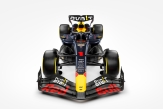
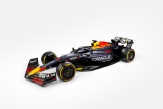

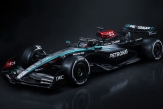
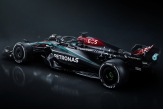


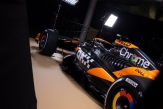

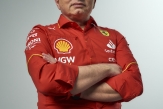
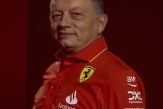
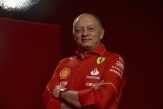

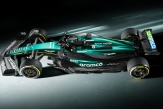

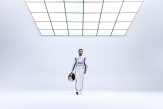


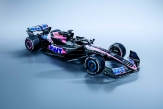
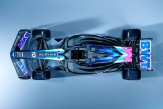

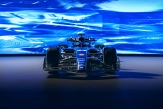

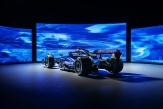
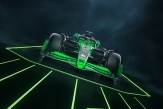
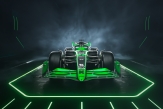
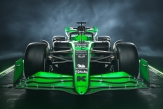

15/04/2024 от Огнян Тенчев (drJeckyll), няма коментари